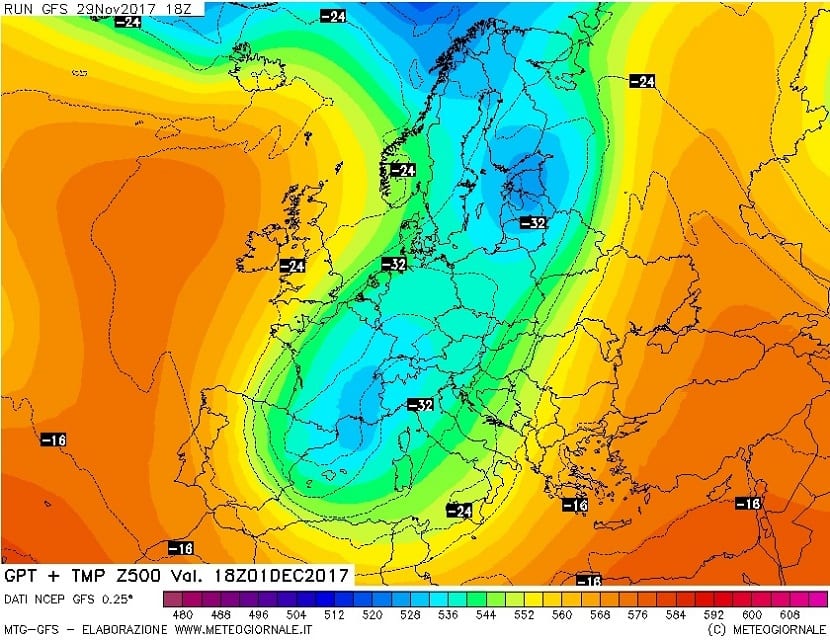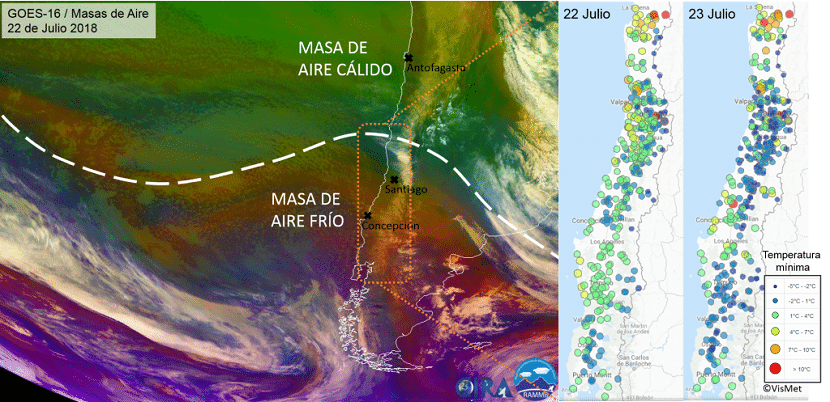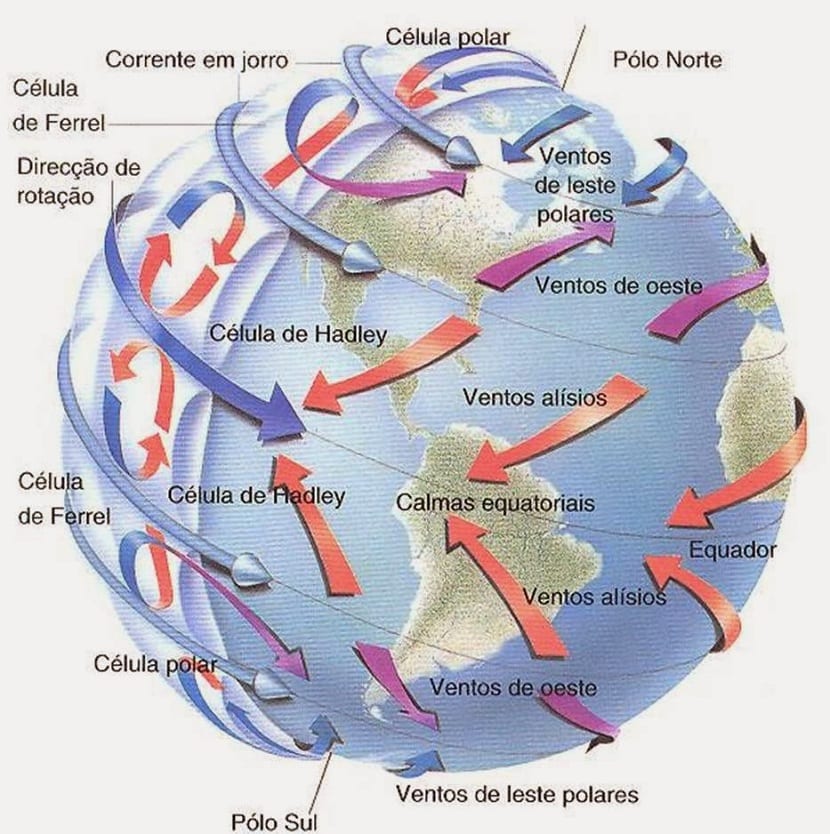
An air mass can be defined as a large portion of air that has a horizontal extension of several hundred kilometers. It has physical properties such as temperature, moisture content and vertical temperature gradient that are more or less uniform. Since the air masses They are very important for meteorology and climatology, we are going to dedicate this complete article to know their characteristics and dynamics.
If you want to know everything related to air masses, this is your post.
Types of air masses
As we have mentioned before, this large portion of air that has a horizontal extension and certain physical properties is what we call the air mass. They are classified according to the physical properties they possess, especially by temperature. Depending on the temperature of the air mass we find cold masses, like the arctic and polar, or warm, like tropical air masses. There are also other types of classifications according to its humidity, that is, its water vapor content. Air masses with little content in water vapor are called continental masses. On the other hand, those that if they come loaded with humidity, they are the maritime ones, because they are usually in areas near the sea.
There are intermediate location zones where we find the air masses in winter and summer and they collide in their type. These zones are the so-called air fronts and the Intertropical Convergence zone.
Dynamics of air masses

Now we are going to analyze the dynamics of the air masses to understand more about it. There is a movement in the horizontal plane of the air masses that is conditioned by the atmospheric pressure that exists on the earth's surface. This movement of the air masses is known as the pressure gradient. Air tends to move from the area where there is more pressure to where there is less. This circulation is what establishes an air flow or gradient.
The gradient is defined by the pressure difference that we can find. The higher the pressure difference the more force the wind circulates. These differences in the pressure values of the horizontal plane are responsible for changes in the acceleration of the air masses. This acceleration is expressed as a change in force per unit mass and is perpendicular to the isobars. This acceleration is called the force of the pressure gradient. The value of this force is inversely proportional to the density of the air and directly proportional to the pressure gradient.
Coriolis effect

El coriolis effect It is caused by the rotational motion of the Earth. It is a deviation that the planet produces on the air masses due to the fact of having a rotational movement. This deviation that the planet produces on the air masses due to the rotational movement is known as the Coriolis effect.
If we analyze it from a geometric point of view, it could be said that the air masses are as if they were moving on a moving coordinate system. The magnitude of the Coriolis force per unit mass is directly proportional to the horizontal speed that the air is carrying at that moment and the angular speed of rotation of the Earth. This force also varies depending on the latitude in which we are. For example, when we are in the Equator, with latitude 0, the Coriolis force is completely canceled. However, if we go to the poles, this is where we find the highest Coriolis values, since the latitude is 90 degrees.
It could be said that the Coriolis force always acts perpendicular to the direction of air movement. In this way, there is a deviation to the right whenever we are in the northern hemisphere, and to the left if we are in the southern hemisphere.
Geostrophic wind

Surely in time you have heard it sometime or on the news. The geostrophic wind is the one found in the free atmosphere from a height of 1000 meters and blowing almost perpendicular to the pressure gradient. If you follow the path of the geostrophic wind, you may find the high pressure cores on the right and the low pressure cores on the left in the northern hemisphere.
With this we can see that the force of the pressure gradient is completely balanced by the Coriolis force. This is because they act in the same direction, but in the opposite direction. The speed of this wind is inversely proportional to the sine of latitude. It means that for the same pressure gradient that is associated with a geostrophic wind, we will see how the speed of circulation decreases as we move towards higher latitudes.
Frictional force and Ekman spiral

We go on to describe another important aspect in the dynamics of air masses. Air friction, while sometimes considered negligible, need not be. This is due to the fact that the friction it has with the earth's surface has a quite important effect on the final displacement. It causes the wind speed to decrease when it is near the surface to values below the geostrophic wind. Further, causes it to pass through the isobars more obliquely in the direction of the pressure gradient.
The friction force always acts in the opposite direction to the movement with the air masses. If the degree of obliquity with respect to the isobars decreases, the friction effect decreases, as we increase to a certain height, about 1000 meters. At this point the winds are geostrophic and the friction force is almost non-existent. As a consequence of the frictional force on the surface, the wind takes a spiral path known as the Ekman Spiral.
As you can see, the dynamics of air masses is quite complicated. There are many factors to consider. I hope that with this information you can learn more about it and clarify some doubts.